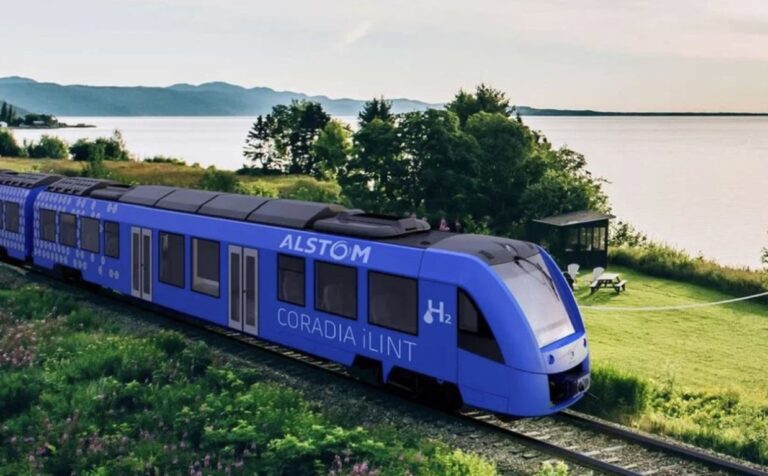North America’s first hydrogen train is taking passengers on a two-and-a-half-hour journey through central Quebec this summer.
The tourist train produced by the French company Alstom travels from Montmorency Falls in Quebec City to Baie-Saint-Paul – along the route of the Train de Charlevoix.
The train uses about 50 kilograms of hydrogen per day, according to estimates by Serge Harnois, managing director of Harnois Énergies, which supplies the fuel. This replaces about 500 liters of diesel that would be burned during the trip.
While fossil fuels may be at their peak, “we are at the beginning of the hydrogen story,” Harnois said.
Table of Contents
Why the train is being tested in Quebec
The same model train, known as the Coradia iLint, has already carried passengers in eight European countries. Last year, Germany bought a version using Canadian-made fuel cells for a hydrogen-only route.
In February, the Quebec government said it would invest $3 million in the $8 million project. At the time, Environment Minister Benoit Charette said the project was part of the province’s plan for a green economy by 2030. Which relies on hydrogen to decarbonize parts of the economy where conventional electrification is not possible.
In addition, it appears that the technology lends itself well to low-density areas. Such as the rural Charlevoix region, where it would otherwise be more difficult to electrify transportation.
Where does hydrogen come from?
Harnois Énergies, based in Quebec City, produces hydrogen using an electrolyzer, which splits water into hydrogen and oxygen using electricity.
Because the electricity comes from Hydro-Quebec-which is 94 percent generated by hydropower, 5 percent by wind power, and almost completely decarbonized-the resulting hydrogen is considered green.
To refuel, the full hydrogen tank on the truck is connected to the empty tank on the train, and the pressure difference causes hydrogen to flow from one to the other. A regulator controls the flow so that it does not get too hot. Refueling takes about an hour.
The goal is for the train to be able to travel the entire route, from Quebec City to La Malbaie. But more testing will be needed because that part of the railway is very curvy and the hydrogen train’s wheels are not in the same position as those on its diesel predecessor.
Read also: Green hydrogen, all about the fuel revolutionizing the clean energy sector












